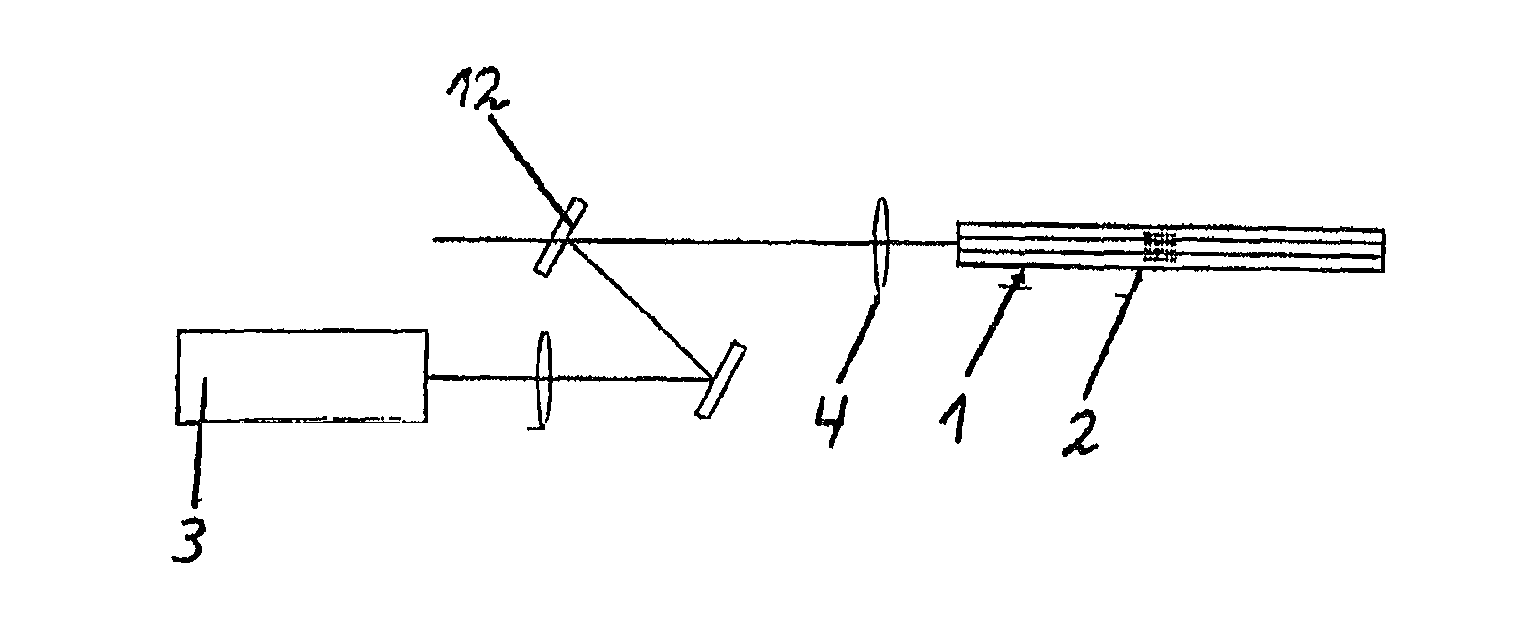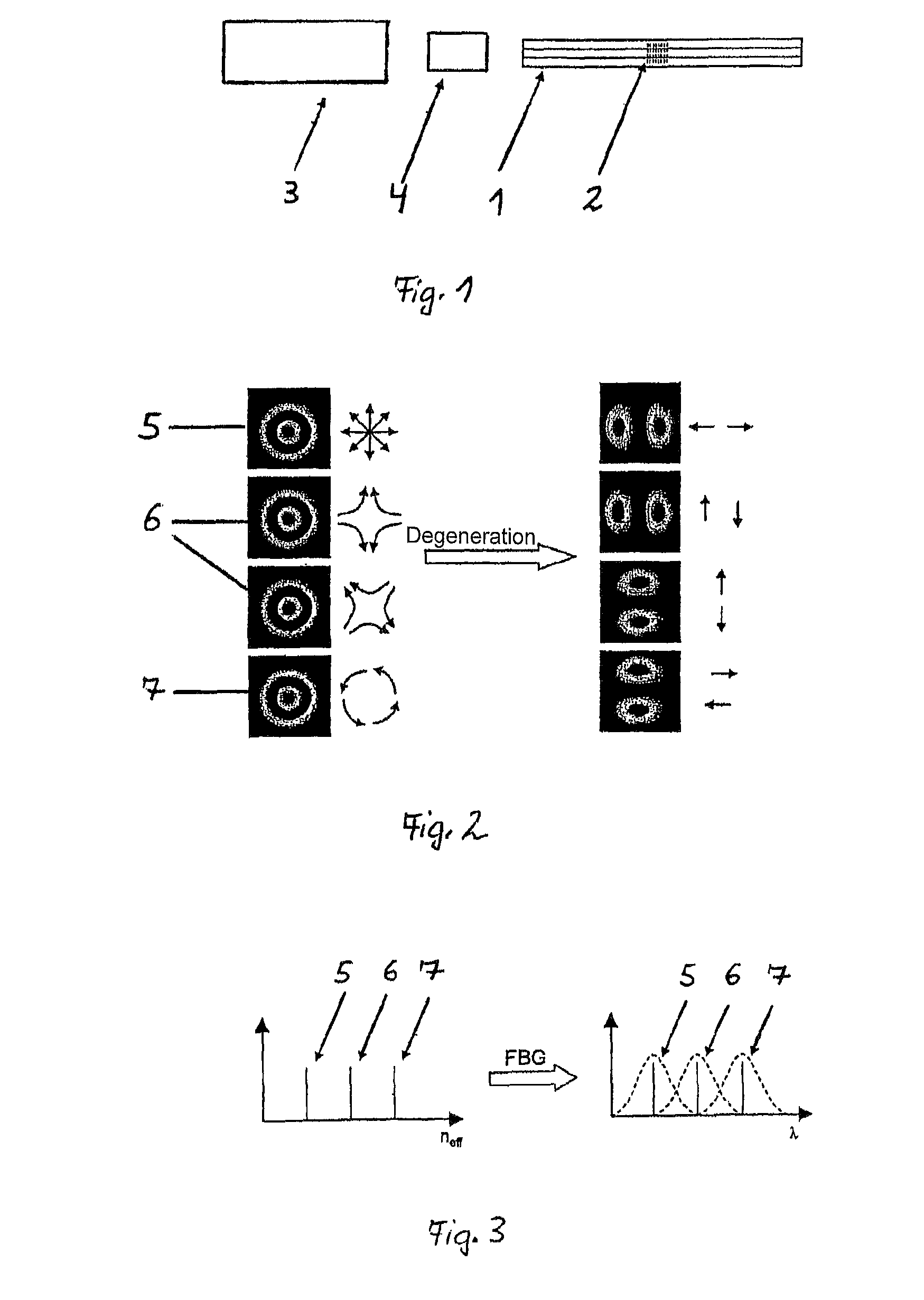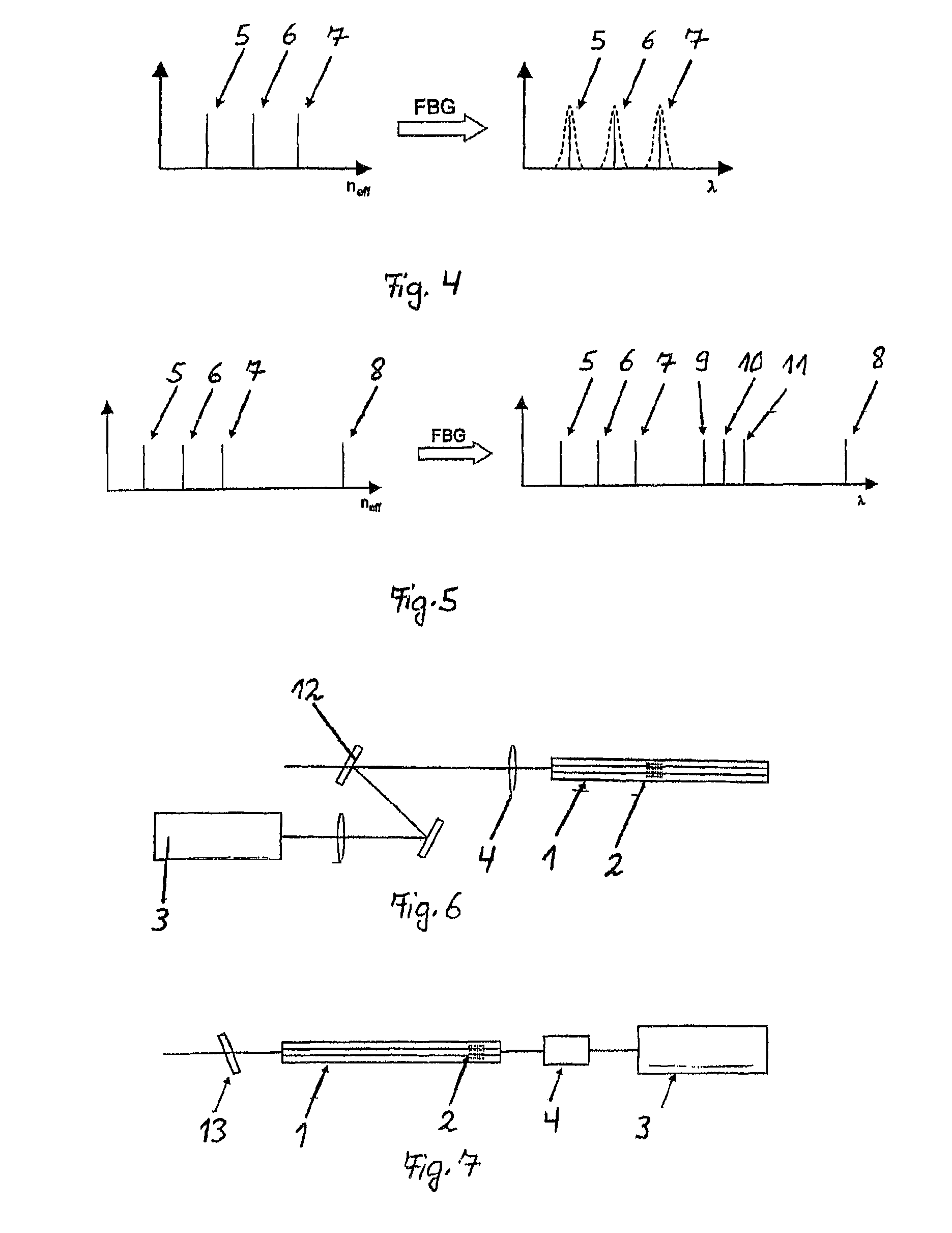Generation of azimuthally or radially polarized radiation in optical waveguides
a technology of azimuthally or radially polarized radiation and optical waveguide, which is applied in the direction of optical waveguide light guide, optical element, instrument, etc., can solve the problem of very small wavelength difference between the modes in practice, and achieve the effect of simple, stable and cost-effectiv
- Summary
- Abstract
- Description
- Claims
- Application Information
AI Technical Summary
Benefits of technology
Problems solved by technology
Method used
Image
Examples
Embodiment Construction
[0028]The inventive device shown in FIG. 1 consists of an optical waveguide 1, a fibre Bragg grating 2, a light source 3, and an optical probe 4.
[0029]In accordance with the invention, the structure of the optical waveguide 1 must be so designed that it abolishes the degeneration of the modes, i.e. it is “strongly conducting”. Hereby, the azimuthally or radially polarized modes obtain different refractive indices. The modes conducted within the optical waveguide 1 are reflected at the fibre Bragg grating 2, wherein the difference between the effective refractive indices of the modes is converted into a difference of the reflexion wavelength. Since the wavelength difference between the modes is relatively small, the fibre Bragg grating 2 must be designed to be sufficiently narrow-band in order to achieve high polarization purity of the modes. If the fibre Bragg grating 2 is too broadband, the reflected modes overlap each other and polarization purity drops.
[0030]FIG. 2 shows a radial...
PUM
 Login to View More
Login to View More Abstract
Description
Claims
Application Information
 Login to View More
Login to View More - R&D
- Intellectual Property
- Life Sciences
- Materials
- Tech Scout
- Unparalleled Data Quality
- Higher Quality Content
- 60% Fewer Hallucinations
Browse by: Latest US Patents, China's latest patents, Technical Efficacy Thesaurus, Application Domain, Technology Topic, Popular Technical Reports.
© 2025 PatSnap. All rights reserved.Legal|Privacy policy|Modern Slavery Act Transparency Statement|Sitemap|About US| Contact US: help@patsnap.com



